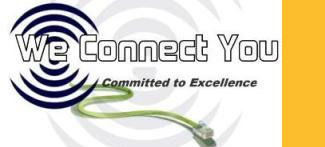|
|
How Do You Decide What You Need for your Business?
-
Phone Systems Handsets- The number of telephone system handsets is typically determined by the number of employees that have, or should have, their own phone. You should also include any reception or common areas (i.e., meeting rooms, lobby, etc.)
-
Business Phone Lines (smaller systems)- The number of phone lines is equal to the maximum number of simultaneous inbound and outbound calls the company can make on its phone system. For example, a telemarketing company may need 40 telephone lines to service 60 handsets, while a manufacturing company may only need 15 telephone lines to service the same 60 handsets.
-
Business Phone System Trunks (Larger Systems)- Phone system trunks typically refer to the total number of connections between your business telephone system and your phone carrier. Tie trunks are used to connect the phone systems between multiple offices. For most small to medium US and Canadian businesses this is called a Trunk Level 1 or standard t1 line - Europeans use an E1 with slightly more capacity. For smaller companies that still need digital access for their business phone system, or the Internet, may use xDSL or a fractional t1 line. While, larger companies with heavy communications needs may step up to a ds3 or oc3 trunk.
-
Business Telephone Systems Ports (PBX)- The maximum number of simultaneous telephone service connections that you will need to connect to your business telephone system. Telephone services include outside lines, inside extensions, voice mail, etc. the system will need to accommodate simultaneously.
What are Some Common Features of Communications Systems?
-
Automated Call Distributor (ACD): Ensures calls are answered quickly and efficiently by routing inbound callers to group of employees with pooled extensions (i.e., support, sales, etc.). ACDs are generally used by sales and support groups to improve service levels and increase group utilization.
-
Interactive Voice Response (IVR): Allows callers to input and retrieve information from your company's computer database(s) via their touchtone telephone. IVRs are typically used by sales and support teams to improve their service levels and reduce support costs for high call frequency tasks (e.g., order status).
-
Unified Messaging: Improves employee productivity by storing their email, fax, and voice messages in a single inbox accessible anytime anyplace via the phone, PC, Web or wireless device.
|
 |
| |
 |
|






